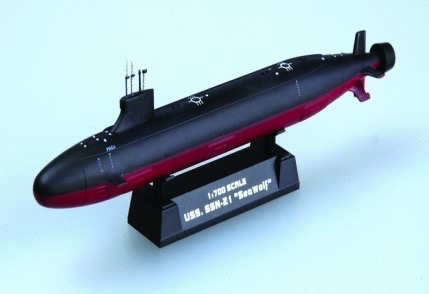

There are 2 types of Control Rooms - the traditional type and the new type aboard the Virginia class submarine. Types of Submarines - Ballistic Missile Submarine (SSBN) Note the funky shape of the front of the sail, which is that way for hydrodynamic purposes, reducing drag through the water at high speed. The Seawolf is the bottom left and the Virginia is the bottom right. The Navy moved to bow planes vice sail planes during the construction of the Los Angeles class. Notice the top left submarine has "Sail Planes" while the top right doesn't. The top two pictures are Los Angeles class submarines. Enter the Virginia class, with 10 of them in-service as of 2013, leveraging the Seawolf and even more innovative technology. These are very capable submarines but came with a corresponding price tag, and with the end of the Cold War, the Navy needed a more affordable submarine.

We have 3 Seawolfs, huge Cold War submarines with 8 torpedo tubes, capable of carrying 50 torpedoes each. The oldest and most familiar, made famous by Tom Clancy in The Hunt for Red October, is the Los Angeles (688) class, which still makes up the bulk of our fast attack fleet. Space forward of Aquarium to allow maintenance of UUVs, ROVs etc.There are 3 types of fast attack submarines in the U.S. Offset to starboard with hatch on starboard side. 'Aquarium' hangar for UUVs, ROVs and possible submersibles. Together with other photos, this allows an approximate external layout to be sketched:Ī. However, the insert itself was photographed several times during construction which gives us several hints: Although there have been a few interesting artist impressions and illustrations in books and on the internet, very little is known for sure about the internal layout. This makes space for UUVs, ROVs and submersibles to leave and return via hangar doors either side of the boat. The 30m (100ft) long hull insert containing most of the special mission equipment is widely reported to be a ‘wasp waist’ section, meaning that it tapers in from both ends with a narrow section in the middle. SEALs, SBS, COMSUBIN, Sh-13, Spetsnaz, Kampfschwimmers, Commando Hubert, 4RR and many more. A world history of naval Special Forces, their missions and their specialist vehicles. THE book on Special Forces subs Covert Shores 2nd Edition. We also serve as the tactical development authority for SUVs, UUVs, Undersea Acoustic Arrays, and Arctic Warfare. We are the operational command responsible for the maintenance and operation of assigned submarines, submersibles, and the Navy's Ocean Engineering systems. USS Jimmy Carter and the other two Seawolf Class boats (USS Seawolf SSN-21 and USS Connecticut SSN-22) are assigned to COMSUBDEVRON FIVE (Submarine Development Squadron 5) in the Pacific, which describes its mission as: Only two, the ‘NR-1’ midget submarine and the USS Jimmy Carter were intended for these missions from the start, the rest were modified during their service: The US Navy has operated six specifically modified ‘Special Mission’ submarines (read ‘spy submarines’) since the mid-1960s. This Covert Shores Recognition Guide Covers over 80 classes of submarines including all types currently in service with World Navies.

Get The essential guide to World Submarines The Multi-Mission Platform can also accommodate SEALs and other USSOCOM operators, which also implies that some SDVs (SEAL delivery Vehicles) can also be accommodated. These objects could potentially include Submarine Communication Cables (SCCs) such as the fiber optic cables used for the internet. The roles of these vehicles is subject to speculation but almost certainly involves ISR (Intelligence Surveillance and Reconnaissance), and ‘underwater engineering’ to place, retrieve or manipulate objects on the sea floor. The modification to allow Special Missions including inserting a 100ft (30m) Multi-Mission Platform into the hull which contains extra accommodation, working space and hangars (‘aquariums’) for Unmanned Underwater Vehicles (UUVs), Remotely Operated Vehicles (ROVs) and possibly manned submersibles. The last Seawolf Class was however something quite special: the USS Jimmy Carter is the US Navy’s premier ‘special mission’ submarine equipped for covert intelligence operations. The end of the Cold War and a shift towards littoral combat, combined with their incredible cost, resulting in only three Seawolf Class boats being constructed before production switched to the smaller and cheaper Virginia Class. Larger, faster, deeper diving, better armed and stealthier than previous generations of US Navy attack submarine, the Seawolf Class (SSN-21) were conceived towards the end of the Cold War as the ultimate underwater hunter-killers.


 0 kommentar(er)
0 kommentar(er)
